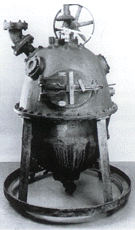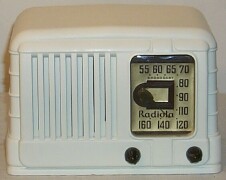Bakelite is a sort of plastic material which was invented by the Belgian Leo Beakeland (1863 – 1944).
IT IS HARD TO BELIEVE that one can combine two unlikely substances like carbolic acid and formaldehyde to produce a beautiful and versatile substance such as phenolic resin or “Bakelite,” a revolutionary, non-flammable, early plastic. “The material of a thousand uses,” as it was called, made a splash in the 1920s, ’30s and ’40s.
The Rice-Kellogg paper of 1925 was important in disseminating research on loudspeaker design. It resulted in the production of a loudspeaker design that drove most others out of the market within a few years. It published an amplifier design that was important in boosting the power transmitted to loudspeakers. In 1926, the commercial version was sold as the Radiola Model 104 loudspeaker with a 1-watt power amp. The power of this amp, and the extra terminals on the back of the Model 104 allowed attachment of a radio receiver, the Radiola 28.
“This combination of the Radiola 28 and the Radiola Loudspeaker 104 thus made available for the first time a complete batteryless radio receiver that could be operated like any other electrical appliance, merely by ‘plugging it in.’
The radio became a very important part of the daily life in the US during the 1930s. The radio was already very popular during the 1920s, but it became more popular during the 1930s. The radio became a real part of the US national culture. In 1930 about 12 million US households owned a radio, that number increased to 28 million radios in 1939.
~
In the case of the radio, bakelite and catalin were seen as a good substitution for wood. Wood was often used by the wealthy part of American society. But the imitation of wood by bakelite was almost perfect. The best thing of all was that a bakelite and catalin radio was much cheaper than a radio with a wooden cabinet. Mostly during the depression of the 1930s, bakelite and catalin material made it possible for everyone to buy a radio for just $10,– instead of $ 90,– or so for a radio with a wooden cabinet. On the other hand bakelite and catilin were and are very strong, durable, gloomy and attractive material for designers. But what made bakelite and catilin, as kinds of plastic material, very attractive?The attractive side to these materials, bakelite (in powder form) and catalin (in fluid form), was the fact that it could be moulded.



Pingback: Old Time Radio | JoelsBlog.net